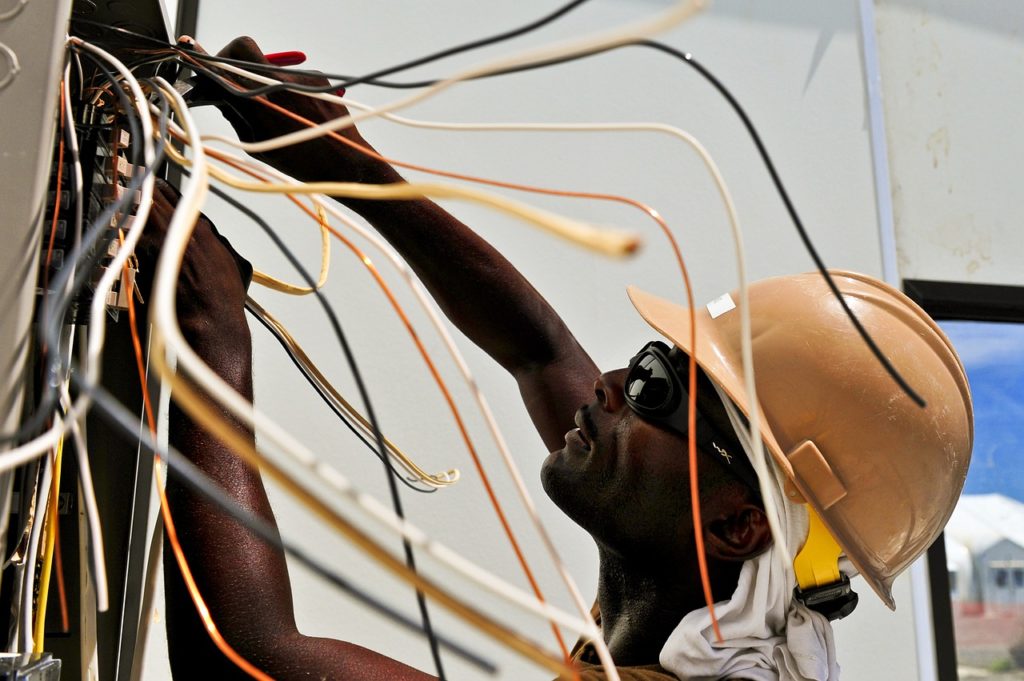While many of us take them for granted nowadays, electrical cables weren’t always here to distribute power to our devices and appliances and make our lives easier. How did electrical cables evolve throughout the decades? And just how different is modern wiring from its earlier iterations?
1800s to early 1900s
The earliest use of cables date back to the 1800s, when telegraph lines were connected from Washington D.C. to Baltimore, Maryland.
A wiring system known as knob-and-tube was developed between 1890 and 1910. Individually conducting wires had rubberised cloth fabric for protection and porcelain tube insulators for stable placement. For safety, hot wires and neutral wires ran separately.
At the time it was the most advanced system available and it was widely used in many homes and establishments (the system is still present in some older American homes). However, the downside of knob and tube is wire exposure and lack of wire grounding. In addition, the rubber insulation on these cables only had an expected lifespan of 25 years.
Then, in the 1930s came non-metallic (NM) sheathed cable, which was similar to knob and tube but had the hot and neutral wires combined. NM also did not have proper grounding.
By 1940, flexible armoured cables entered the scene. This new system emphasised protection and longevity. Its metals walls helped protect the wires from damage and the metal pathway had the ability to ground electricity.
While this was a step forward from the previous wiring system, separate ground wiring was still not possible. Flexible armoured cables could only ground properly if its metal pathway ran completely throughout the service entrance and grounding rod.
Eventually, metal conduits were invented. It allowed users to take advantage of an effective grounding method via the conduit itself.
1950s to 1970s
 Midway through the 20th century, PVC was becoming a viable option in terms of insulation. Users also started using aluminium as an alternative conductor. Back then, copper was still pricey and not many homes and establishments could afford to use it.
Midway through the 20th century, PVC was becoming a viable option in terms of insulation. Users also started using aluminium as an alternative conductor. Back then, copper was still pricey and not many homes and establishments could afford to use it.
In 1965, the NM cable made a comeback, albeit in a more modern form. The grounding wire was now joined with the insulated hot and neutral wires. This time, instead of using rubber sheathing, the new NM cable utilised highly robust vinyl sheathing.
Do note that rubber sheathing is still used in heavy duty applications that require high weather and pressure resistance. An example of this is the H07RN F, which protects the cable in tough working conditions.
Then in the 1970s, copper wire conductors became a standard in NM sheathed cable, metal, and PVC plastic conduit. Safety improvements were also made to extend the application of ground-fault circuit interrupter and arc-fault circuit interrupter devices. These helped protect cables from fire damage.
1980s and beyond
Improvements in electrical cables continued, with optical fibres being introduced to aid better data transmissions. Cross-linked polyethylene insulations or XLPE became common in high voltage transmissions lines.
Whether it’s for domestic use or heavy duty industrial applications, wiring systems have indeed come a long way. With the growing importance of wireless technologies in today’s world, it’s likely that electrical cables will continue to evolve as the applications that use them change.

